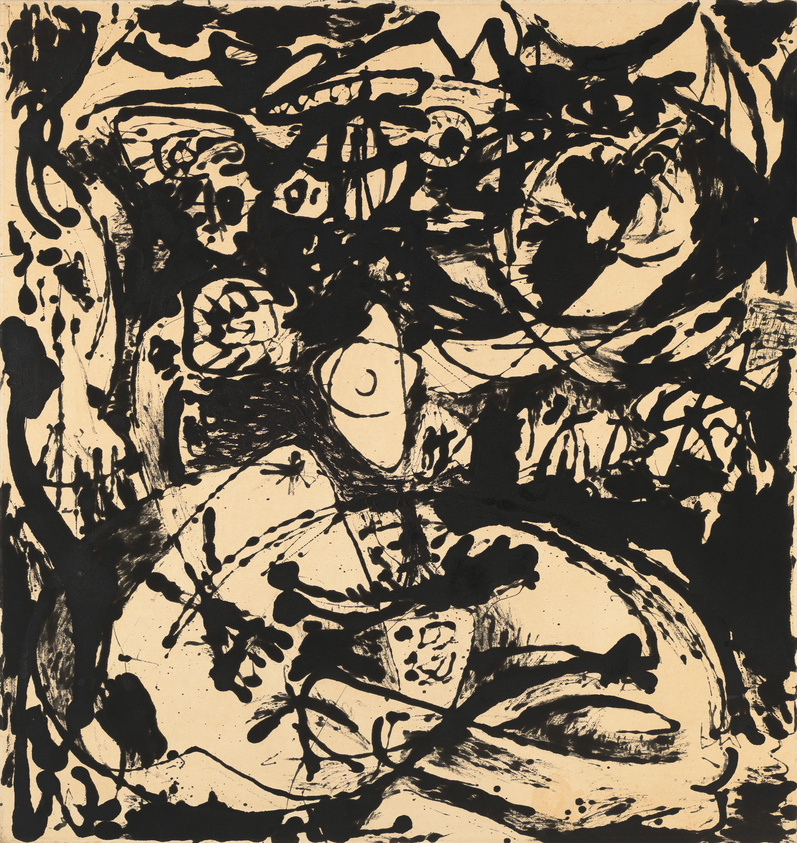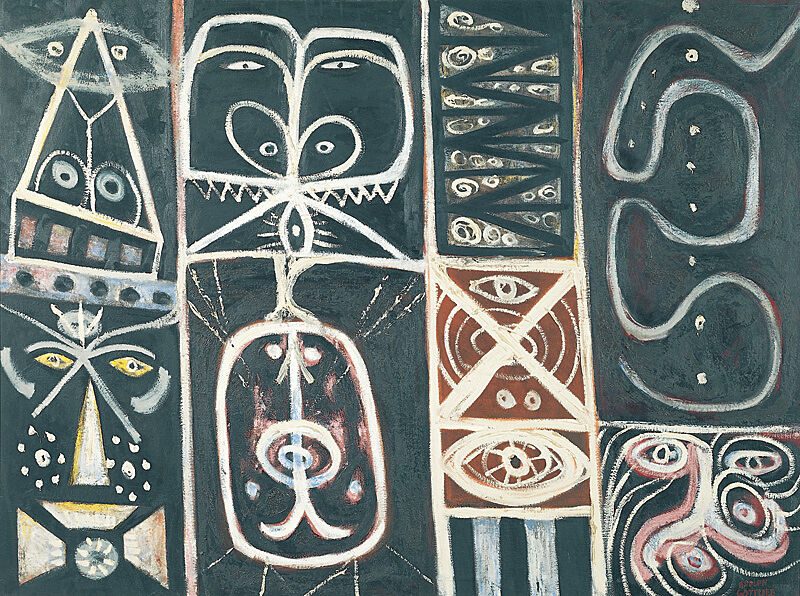Jackson Pollock, Untitled, c. 1939–42
July 10, 2012
0:00
Jackson Pollock, Untitled, c. 1939–42
0:00
Narrator: This drawing by Jackson Pollock is dominated by a kind of hybrid figure. Its hands and feet look human, but its mouth and nose are more animalistic. It forms a tight group with a serpentine snake, and a horse peers over the top of the composition.
Look at the central figure’s body. Pollock has outlined it in warm browns and ochres and highlighted the surfaces in a dark blue. He’s used these untraditional colors to model a body that is strange in its proportions but almost classical in its volume. As a young man he had studied with the American Regionalist Thomas Hart Benton, who advocated a return to Renaissance technique. Pollock largely resisted Benton’s teachings, but their effects still lingered here.
With its fractured forms and jumbled-up figures, Pollock’s drawing also responds to a European painting of a much more recent vintage—Pablo Picasso’s Guernica. Guernica was an anguished protest against a contemporary event, the bombing of the Basque town of Guernica during the Spanish Civil War. He painted it in 1937. It traveled to New York in 1939, and Pollock saw it soon after its arrival. He was captivated by its nightmarish intensity, and impressed by its contemporary relevance. His encounter with the painting intensified his sense that European artists—and Picasso most of all—were the ones to beat. Here, he responds to Picasso quite directly. In years to come—partly by struggling to make a more distinctly American art—he would create an abstract language that was more uniquely his own.
In Signs & Symbols.


